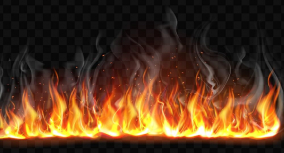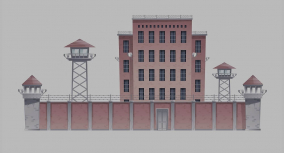Welcome to Faulkner’s Barn Burning study guide! Here, you will find relevant information regarding this iconic short story. You will learn about the plot, genre, characters, as well as themes and symbols of Barn Burning by Faulkner. All of that will allow you to understand the story’s meaning on a deeper level.
Barn Burning Key Facts
Barn Burning Articles
Barn Burning: Summary & Analysis
William Faulkner’s short story Barn Burning is one of his lesser-known works. However, it deserves your attention because of its masterful plot and connection to The Snopes Trilogy. In the article, you’ll see Barn Burning’s summary and analysis that will help you understand the story better.
This article focuses on William Faulkner’s use of characters in the short story Barn Burning. Learning about them will help you understand this work to the full extent.
Barn Burning by William Faulkner is considered one of his best works. In the short story, he traces traumatic events experienced by a young boy, Sartoris. This article explores four major Barn Burning themes: loyalty, morality, resentment, and racism.
In William Faulkner’s Barn Burning, symbolism helps the reader to understand deeper emotions and relationships in the story. In this article, we will focus on two of the most prominent symbols: fire and blood.
Barn Burning: Essay Topics & Samples
If you are looking for fresh Barn Burning topics, prompts, and essay examples, then you are in the right place. Here you will find plenty of excellent writing ideas and a list of samples that will help you get started on the right note.
Historical Context of Barn Burning
Faulkner’s Barn Burning examines the boy’s struggle between loyalty to his family and commitment to his inner sense of justice. The society in which Sarty grows up cannot be more divided. Barn Burning’s text brilliantly depicts the American South after the Civil War. As the country tries to recover from poverty and get rid of slavery, Sarty’s family is placed in the middle of the economic and class struggle. Even though the time period is not clearly defined, the reader can guess that the story takes place in the early 1890s.
Abner Snopes, the head of the family, feels angry and bitter towards the system. For that reason, Abner feels deep hatred towards the rich White people and the poor African Americans. His position in society is very unfavorable, which makes him search for vengeance and take justice into his own hands. Barn Burning depicts the patriarchal society that existed at that time. Interestingly, Faulkner doesn’t develop women characters in the story. Instead, he is interested in highlighting the conflict between the father and the son, the new and the old South. The climax of the story happens when Sarty breaks free from the family and runs to de Span’s mansion. He is the only family member who gained independence. However, as it usually happens in American literature, freedom comes at a price.











